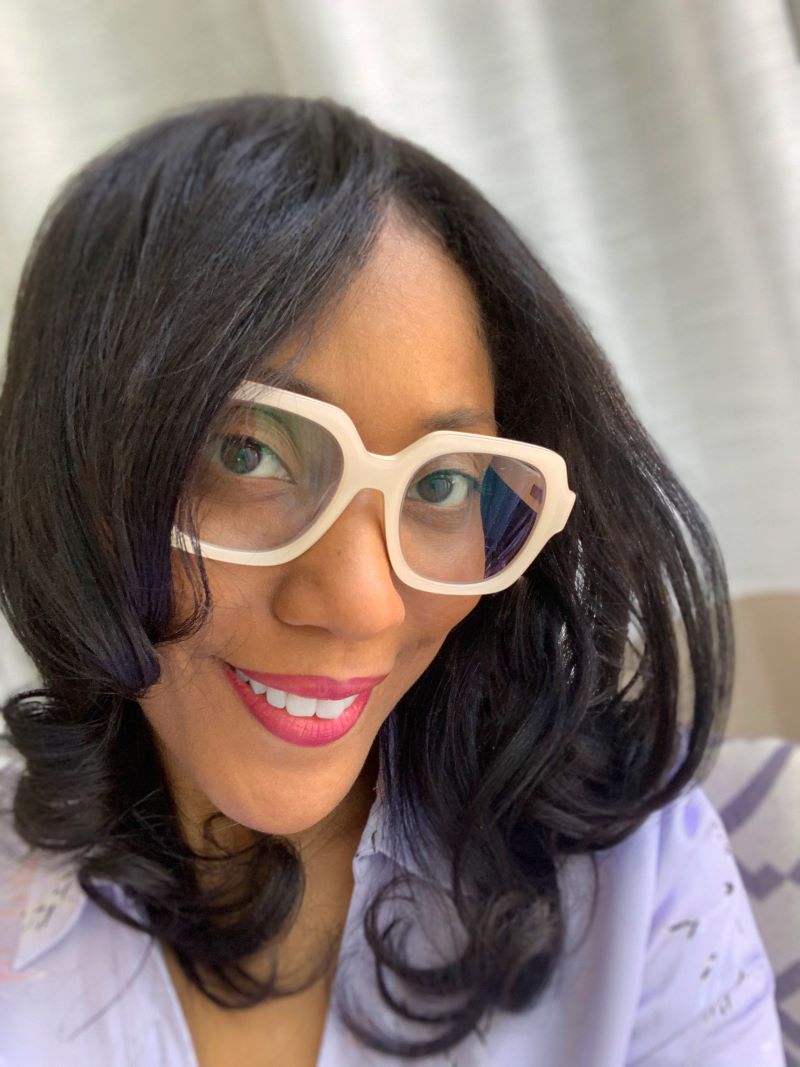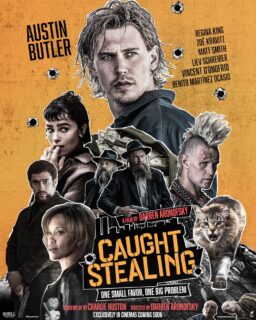It isn’t the people they save, it was never the disasters they avert, and a big heart is lovely but kindness doesn’t do it either. There is only one entity or force that validates a hero: it’s the villain, baby. We’re not talking about antagonists versus protagonists (we’re going bigger). Nor is this an homage to swaggering masculine braggadocio—the kind that pushes women into the margins in the roles of sexy sidekicks and maniacal matriarchs. Oh no, today we’re lifting our poison chalices to the Ladies of Villainy, because a hero can never reach their truest potential without a nemesis who makes winning improbable. And when that villain is a fabulous femme, we are guaranteed a fatal good time. This one is for the leading ladies of villainy and the ways they became the most vile of iconoclasts.
There’s a wealth to explore and yet, much like your mom before a road trip, let’s lay down some ground rules. We won’t be using the word “female” unless we’re referencing the Xenomorph Queen because that term could refer to any species—horses, platypuses, chimera—it’s too broad. However, “femme” is an inclusive term that speaks to those of us who identify as such. Secondly, as much as we adore them, we won’t be talking about the Disney Villains because they have a tendency to take over a conversation. As delightfully dangerous dames should. Adjacent to that conversation is the villainization of older women in fairytales, but we’re aiming more for entertainment than a dissertation. Finally, we’re going to skip the conversation about “likability” and instead focus on the truth: a great villain has to be despised inside their world and yet become a guilty pleasure out here in ours. Full stop.
Are you ready? Did you take a bathroom break? Let us begin.

Big Bad, Small Package
The first of our evil iconoclasts is one whose effect can be seen in Regan MacNeil from “The Exorcist” (1973) and Claudia from “Interview with the Vampire” (1994); her influence is apparent in “The Shining” (1980) as well as in “Orphan” (2009), alongside the other wicked little girls throughout cinema. The film is “The Bad Seed” (1956), her name is Rhoda Penmark, she is eight years old, and she is a magnificent murderer who continues to thrill. The pigtails, the frilly dresses, the evil glares when no one is watching. Rhoda is cruel enough to kill anyone, utilizing the most vicious means (burning, drowning, bludgeoning), and then blaming the victim. As though they had it coming all along. They didn’t, but she did.

Work, Queen!
The Wicked Witch of the West cannot be denied her crown. We recognize her by look, by the sound of maniacal laughter, and by deed. Everything that can be said has been said, unless we talk about the scions of this villainous icon. We’ve all sung along to her Broadway remix, Elphaba from Wicked—also set to be a film—but let’s go back further in time.
When Mabel King swished, strutted, and glimmered her way onto a runway as Evillene in “The Wiz” (1978), the ostentatious opulence of the dress, the ferocity of the makeup, and her command of her domain became an instant classic. Not to mention that voice. Evillene forced us to bow down when she sang “Don’t Nobody Bring Me No Bad News.” Her drag was impeccable. As was her sharply enunciated command to “Work!” With that, Evillene accomplished a feat the mainstream wouldn’t see again until RuPaul demanded the same in “Supermodel (You Better Work),” his 1993 hit. Worse, so much worse (which is praise when it comes to a villain), this Queen of the Wicked Witches did it all while stomping on the proletariat in her own sweatshop. The audacity is outstanding.

A Spoonful of Poison Helps the Medicine Go Down
Villains often rise out of the state of being human. Zombies reflect societal ills—our literal overconsumption until we cannibalize ourselves. Killer clowns and creepy dolls are throwbacks to the childhood fears that remain vividly terrifying in our memories. Sadly, society has also made us afraid of relying on someone else for our well-being. This is the origin of ‘Nursing Evil,’ villains who use caregiving as a means to control and eventually torture their patients.
Annie Wilkes has a major claim to this category. In “Misery” (1990), she uses a sledgehammer to disable her favorite author, forcing him to revise his latest book her way. If that horrifies you, in the original novel by Stephen King, she puts novelist Paul Sheldon under and amputates both feet at the ankle. Annie embodies nightmares of dependency, but there are bigger baddies with far more insidious means of destruction. There is one who might be so wretched she created her own slang. In “One Flew Over the Cuckoo’s Nest” (1975), the head nurse at a psychiatric facility manipulates her patients, using their mental illnesses against them to cause them pain. The result is a suicide followed by a lobotomy. Meanwhile the nurse carries on in smug assurance she has won. The evil oozing out of Nurse Ratched is undeniable because it is psychological, but also because of the glee she takes in being its source. We cannot confirm she inspired the slang term “ratchet,” but she would say she did and I refuse to argue.

Matrons of Madness x Fatal Femmes
The iconic ladies of villainy run amok under these two mantles. The ‘Bad Mommies’ have representatives from “Mommie Dearest” (1981), “Precious” (2009), “Carrie” (1976), and we’ll add the Xenomorph Queen from “Aliens” (1986) because excluding her seems dangerous. The matrons of madness specialize in abuse and yet they believe they’re doing it for the good of the children.
The ‘Fatal Femmes’ have a very different mission. They seek to rule because no one can do it better. On this side are representatives like May Day from “A View to a Kill” (1985), Amy Dunne in “Gone Girl” (2014), O-Ren Ishii from “Kill Bill” (2003), and the anti-villain Amanda Waller from “The Suicide Squad“ (2021). None of these women can be bothered with conformity, and if you’re in their way, you’re choosing annihilation.

The Evolution of Mean
If the Witch of the West takes the wicked crown, these baddies are the homecoming queens of despicable. The ‘Mean Girl’ is a trope so iconic it cannot be separated from high school movies. Try it. Regina George (“Mean Girls,” 2004) is too strong to be denied. Even when the trope is subverted it works because of its unshakeable hold on pop culture. You’ll find her in “Carrie” and in “Pretty in Pink” (1986), but if we’re looking for the truest “evolution of mean,” we have to start with the three eponymous villains from the 1988 satire “Heathers.” In them we find the ultimate mean girl squad, each of them diabolical in their ability to dismantle any semblance of self-esteem. In “Heathers,” the trope is commentary on weaponized popularity and the ways society excuses the bad behavior of those who wield power. However, the more generalized mean girl has become the Scylla and Charybdis, monsters we must surpass in order to become the rebellious misfits we’re meant to be. Otherwise high school is a killer and we’ll be swallowed whole.

I Love Lady Villainy
A good villain validates a hero … but is that why we adore the baddies so much? It’s true, in most cases, watching our hero defeat their nemesis is only satisfying after they’ve gone through all nine circles of hell to triumph in a boss level showdown. Another reason might be the villain’s ability to shake off all accountability and act without repercussions or blowback. It’s a vicarious thrill. Each of us has had moments when we wanted to say that terribly clever thing or we’ve imagined drop-kicking a real-life antagonist in the chin. Most of us don’t follow through, but the villains do. Whether validation or vicarious, either covers the love we have for bad guys in general, but I believe the ladies have a different allure. In a primarily patriarchal society, no matter how vicious, Lady Villainy excites us because it overturns the power structure. Many of us are caged by social conditioning and its constrictive ideas of what womanhood looks like. Yet these women flaunt unfettered power; they bow to no man. And when you’re watching a movie for a little escapism, the femme form of villainy feels like freedom.

A Few (as in 45) of My Friends and My Favorite Femme Villains:
- Karaba – “Kirikou and the Sorceress”
- May Day – “View to a Kill”
- Rhoda Penmark – “The Bad Seed”
- Aunty Entity – “Mad Max: Beyond Thunderdome”
- Nicole Horner – “Diabolique”
- Cipher – “The Fate of the Furious”
- Asami Yamazaki – “Audition”
- Femme Villains in Bong Joon Ho movies – “Parasite,” “Snowpiercer,” “Okja”
- Annie Wilkes – “Misery”
- Margaret White – “Carrie”
- Amy Dunne – “Gone Girl”
- Nurse Ratched – “One Flew Over the Cuckoo’s Nest”
- Queen Tamazusa – “Legend of the Eight Samurai”
- The Wicked Witch of the West – “The Wizard of Oz”
- Evillene – “The Wiz”
- Queen Xenomorph – “Aliens”
- Harley Quinn – “The Suicide Squad”
- Amanda Waller – “The Suicide Squad”
- Catherine Tramell – “Basic Instinct”
- Alex Forrest – “Fatal Attraction”
- Hedra Carlson – “Single White Female”
- The Heathers – “Heathers”
- MaMa – “Judge Dredd”
- Samara – “The Ring”
- Miss Hanagan – “Annie”
- Nancy Downs – “The Craft”
- Regan MacNeil – “The Exorcist”
- Mommy – “Cleopatra Jones”
- Rose Armitage – “Get Out”
- Red – “Us”
- Young-Sook – “The Call”
- The Other Mother / The Beldam – “Coraline”
- Mama Fratelli – “The Goonies”
- Eve Harrington – “All About Eve”
- Minnie Castevet – “Rosemary’s Baby”
- Mrs Lovett – “Sweeney Todd”
- Miranda Priestly – “Devil Wears Prada”
- Baby Jane Hudson – “Whatever Happened to Baby Jane”
- Joan Crawford – “Mommie Dearest”
- O-Ren Ishii – “Kill Bill”
- Mary Jones – “Precious”
- Regan MacNeil – “The Exorcist”
- Regina George – “Mean Girls”
- The Trunchbull – “Matilda”











